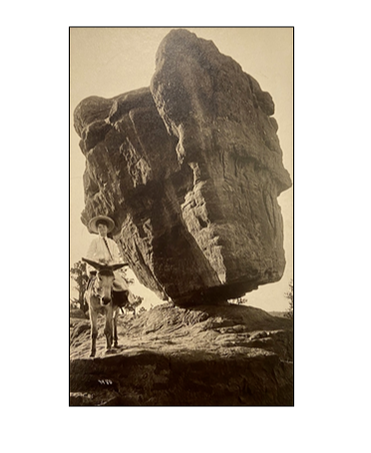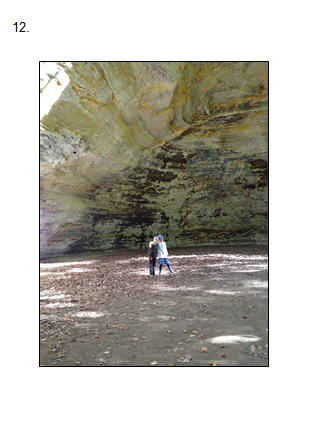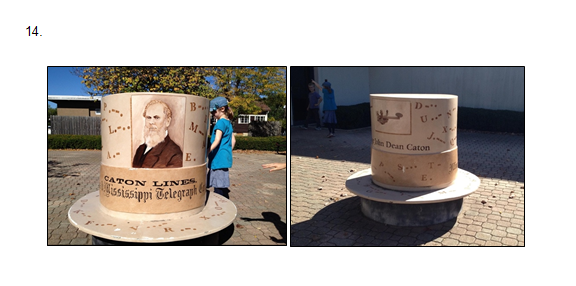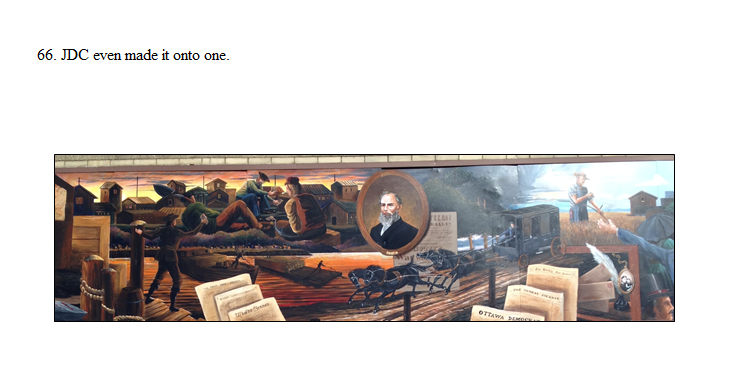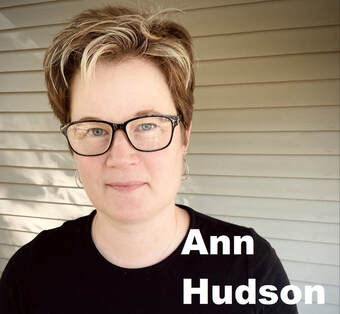We think what we can't see can't hurt us. I met Ann Hudson when I joined RHINO Poetry in 2016. She pays meticulous attention to everything; especially to identify side-stories in our submission reading process. In other words, our editors are often convinced to reconsider poems nearly rejected after hearing her unique interpretation of them.
Her new book, "Glow" (Next Page, 2021) has just released. The opening reading event will be hosted by the press on October 26. This collection entangles her family, Marie Curie's discovery, and girls in the Radium Dial Company. The narrative bounces between science and history. The Radium Dial Company opened a factory in Ottawa, Illinois in 1922 to be close to Westclox, major clock manufacturing company in the area. Radium Dial hired young women to paint watch faces with luminescent paint; they were ideally suited for this work, it was believed, because of their fine motor skills and attention to details. They were explicitly taught to press the paintbrush between their lips to get the brush tip to the finest point possible. In doing so, they ingested radioactive paint, which managers assured them was safe This book is one only Ann Hudson can pull off. The language is beautifully tragic. Today, Hudson shares her zuihitsu-like-list essay (her essay reminds me of Sei Shōnagon's "Hateful Things") showcasing the story behind her new book, "GLOW". Ann Hudson, Glow 88 Pretty Much True Facts
9. John Dean Caton, exhausted by overwork, moved from Chicago to Ottawa in 1838. He farmed for a few years before returning to the law. 10. In 1849 he helped establish the Illinois and Mississippi Telegraph Company, and 18 years later, sold to Western Union. 11. We spent a weekend at Starved Rock State Park, just outside Ottawa. My favorite spot is Council Overhang. 13. One afternoon we visited the nearby Ottawa Scouting and Historical Museum, where Mollie Perrot, local historian and JDC enthusiast, agreed to meet with me. She was excited to meet a Caton descendant. I was excited to see his giant, honorary hat outside the museum. 15. The kids were restless. On our way to get ice cream, we found the statue to the Radium Girls. I’d known it was nearby, but wasn’t looking closely for it. 17. It’s an odd, sad statue. The “girl” in question was likely in her late teens or early 20s, though there’s something about this statue that makes her look considerably younger. 18. The tulip in her right hand sags: defeated, deflated. It’s flaccid. It’s uncomfortable, no matter how you think about it. 20. By the time I got home to Chicago, I was more curious about the Radium Girls than JDC. I didn’t have any intention of writing poems about them. 21. I think “Work (1922)” and “Work (1923)” were the first poems I drafted, intending to leave it at that. 22. 88 is the atomic number of radium. 23. Marie Curie discovered radium. 24. Which makes it sound like she was digging through an attic and found it in an old box. Or she dug it up like a fossil. 25. No. She guessed it was there. She worked in foul conditions, laboring with the heavy materials, tending to a cauldron of what I imagine to be foul-smelling pitchblende she’d somehow finagled to be shipped to her from what is now the Czech Republic. 26. Pierre was interested and supportive. Marie did most of the heavy lifting. 27. At the time she didn’t get her share of the credit. 28. That’s my grandfather’s watch on the floor. It tells time, but it doesn’t glow. 30. My grandfather was JDC’s great-great-nephew. JDC died in 1885, 24 years before my grandfather was born. 31. There are a zillion Johns, Charleses, and Williams on that side of the family. It makes research confusing. 32. Maybe you’re still thinking of that limp tulip. 33. It’s odd to think we vacationed in an EPA Superfund site. 34. The Cleanups in My Community map is pretty sobering. 35. Marie Curie’s cookbooks are kept in a lead-lined vault. If you want to visit them you have to sign a release form. 36. Loie Fuller’s birth name was Mary-Louise Fuller. She was born in what is now Hinsdale, a western suburb of Chicago. 37. I haven’t found Fuller’s Radium Dance on film, but you can see her Serpentine Dance and get a feel for what she was up to. 38. It makes me think of ribbon gymnastics. 39. Fiesta dishware had uranium in its glaze; red was the most radioactive. 40. Fiestaware remains highly collectible. 41. There were casinos where you could play roulette in the dark. The ball and roulette wheel were painted with radium. 42. A musical number called “The Radium Dance” was written for a Broadway musical called Piff, Paff, Pouf, which is pretty mystifying in its own right. 43. One brand name for luminescent paint was Undark. 44. The Radium Girls weren’t just in Ottawa, IL; there were other factories in New Jersey and Connecticut. 45. One bite from a radioactive spider changed Peter Parker forever. But no bad side effects, not even a headache, and he gets the girl. 46. Necrosis: the death of all or most of the cells in an organ or tissue due to disease, injury, or failure of the blood supply. From Greek nekros = corpse. 47. Body burden: the concentration of chemical in the body at any given time. 48. Until the 1970s shoe stores would x-ray your feet to ensure a proper fitting shoe. 49. In 1998 the US FDA declared Mercurochrome as unsafe. 50. Marie Curie’s niece, Helena, was known as Hela. She died by her own hand in Chicago in 1921 at the age of 29. 51. Curiously, scientists refer to the oldest and most commonly used human cell line as HeLa, after Henrietta Lacks, from whom the cells were stolen. 52. A 1933 article in the American Journal of Public Health opens with the paragraph: “The excitement caused by the poisoning, or alleged poisoning, of a number of women engaged in applying a radium compound to watch hands and dials is well remembered. We understand the company was very liberal to the victims, and that new methods have been insisted upon which obviate the danger.”[i] [i]“RADIUM POISONING”, American Journal of Public Health 23, no. 4 (April 1, 1933): pp. 350-351. https://doi.org/10.2105/AJPH.23.4.350 53. After the Radium Dial factory closed down, it reopened a few blocks away under a new name: Luminous Processes. 54. Luminous Processes. Shining Procedures. Glowing Practice. Shimmering Exercise. Radiant Problem. 55. Marie Curie also discovered polonium, which she named after her country of origin, Poland. 56. Peg Looney started working at Radium Dial when she was 17. She made good money: $17.50 a week. She died on August 14, 1929, at the age of 24. The causes of death listed on her death certificate were diphtheria and anemia. 57. Radium can also be instrumental in treating certain cancers. 58. Dial painters were paid eight cents per dial. The faster they painted, the more money they made. They were taught to pinch the tip of their camel-hair brushes between their lips to create a fine point. 59. Chemists at the factory operated behind lead screens. They used tongs. They wore masks. 60. Starved Rock State Park is on land once inhabited by Hopewellian, Woodland, and Mississippian tribes. From the 1500s to the 1700s, it was the land of the Illiniwek. 61. According to legend, Chief Pontiac of the Ottawa tribe was killed by an Illiniwek warrior during a tribal council. During a battle to avenge his killing, the Illiniwek wound up trapped on a cliff overlooking the Illinois River. The Ottawa and Potawatomi surrounded the bluff, but the Illiniwek refused to leave, and many starved to death, giving the area its name. 62. There’s no evidence that suggests this story is true, but it’s so widely disseminated most people take it to be true. 63. John Dean Caton recounted the story during an address to the Chicago Historical Society on December 13, 1870. 64. JDC also turned his attention to studying the natural world. He sent Charles Darwin a copy of a book he wrote on antelope and deer; Darwin sent a gracious thanks, and artfully avoids mentioning whether he plans to read the book. 65. Ottawa has a lot of large, vibrant murals that celebrate its history. 67. The high-quality silica sand in Ottawa is mined to make glass. One newspaper article called it “hypermining.” Turns out it’s not just good for glass; hydrofracking operations use this high-end sand to “prop open cracks in deep underground shale deposits, allowing natural gas to flow freely toward the surface.” [i]The sand is rare, and plentiful in the region. Intense sand mining is putting the local ecology in danger. [i] Dan Ferber, “Scenic state park at center of Illinois frac sand fight,” Midwest Energy News, 6/4/12, https://energynews.us/2012/06/04/state-park-at-center-of-illinois-frac-sand-figh/ 68. The Peltier Glass Company in Ottawa used to produce marbles. 71. William Penn Caton married Elizabeth Steele. They had six children (one John, one William, one Charles, by the way.) 72. Charles Caton married Fannie Hull. They had seven children (including a William and a Charles.) 73. THAT William Caton married Glenore Dallenbach. Here’s a photo of her at age 19, beside the Balanced Rock in Colorado. The photo is dated 1904. 75. She lived to be 100 years old. 76. Glenore had a life-sized doll at the top of her stairs. It scared me and I ran past it. 77. Glenore was my great-grandmother. 78. Glenore’s husband (William, of course) disappeared in 1912. He boarded a train to work and was never heard from again. 79. There’s a glass blowing shop in Ottawa where you can get your loved one’s cremation ashes turned into a paperweight. 80. JDC is buried in the same Ottawa cemetery as William Dickson Boyce, who founded the Boy Scouts in 1910. With the exception of Mollie Perrot, folks in Ottawa seem much more interested in Boyce than JDC. 82. When he lived in Chicago, JDC had a big house on Calumet Ave. Family rumor had it that there was a tunnel of some sort that led from his house to another house. 83. I looked it up in the Chicago History Museum archives. Turns out JDC’s son, Arthur J Caton, was married to Delia Spencer. After Arthur Caton died, suddenly and unexpectedly, Delia married her neighbor Marshall Field, founder of the famous store that bears his name. The tunnel rumor made it to print, with the implication that Delia and Marshall were using it to tryst. 84. So that clock on the corner of State and Washington is in my family. Pretty much. Actually, there are two clocks: one at the SW corner of the building and one at the NW corner. 86. Marshall Fields went bankrupt years and years ago. Its flagship store is now owned by Macy’s. 87. But the clocks are still there. 88. And they still tell the time. Ann Hudson (she/her) is the author of The Armillary Sphere (Ohio University Press); a chapbook about radium, Glow, has just been released from Next Page Press. Her poems have appeared in Cider Press Review, Orion, Crab Orchard Review, Colorado Review, North American Review, Spoon River Poetry Review, and elsewhere. She is a senior editor for RHINO, and teaches at a Montessori school in Evanston, Illinois.
Comments are closed.
|
Archives
July 2024
|
フジハブ
Welcome to FUJI HUB: Waystation to Poetry, Art, & Translation. This is not your final destination. There are many links to other websites here, so please explore them!
Welcome to FUJI HUB: Waystation to Poetry, Art, & Translation. This is not your final destination. There are many links to other websites here, so please explore them!
What are you looking for?
FUJI HUB Directory
Popular Sites:
Gallery of Graphic Poems
Working On Gallery
(Monthly New Article by Writers & Artists)
About Naoko Fujimoto
Contact
Naoko Fujimoto Copyright © 2024
FUJI HUB Directory
Popular Sites:
Gallery of Graphic Poems
Working On Gallery
(Monthly New Article by Writers & Artists)
About Naoko Fujimoto
Contact
Naoko Fujimoto Copyright © 2024
